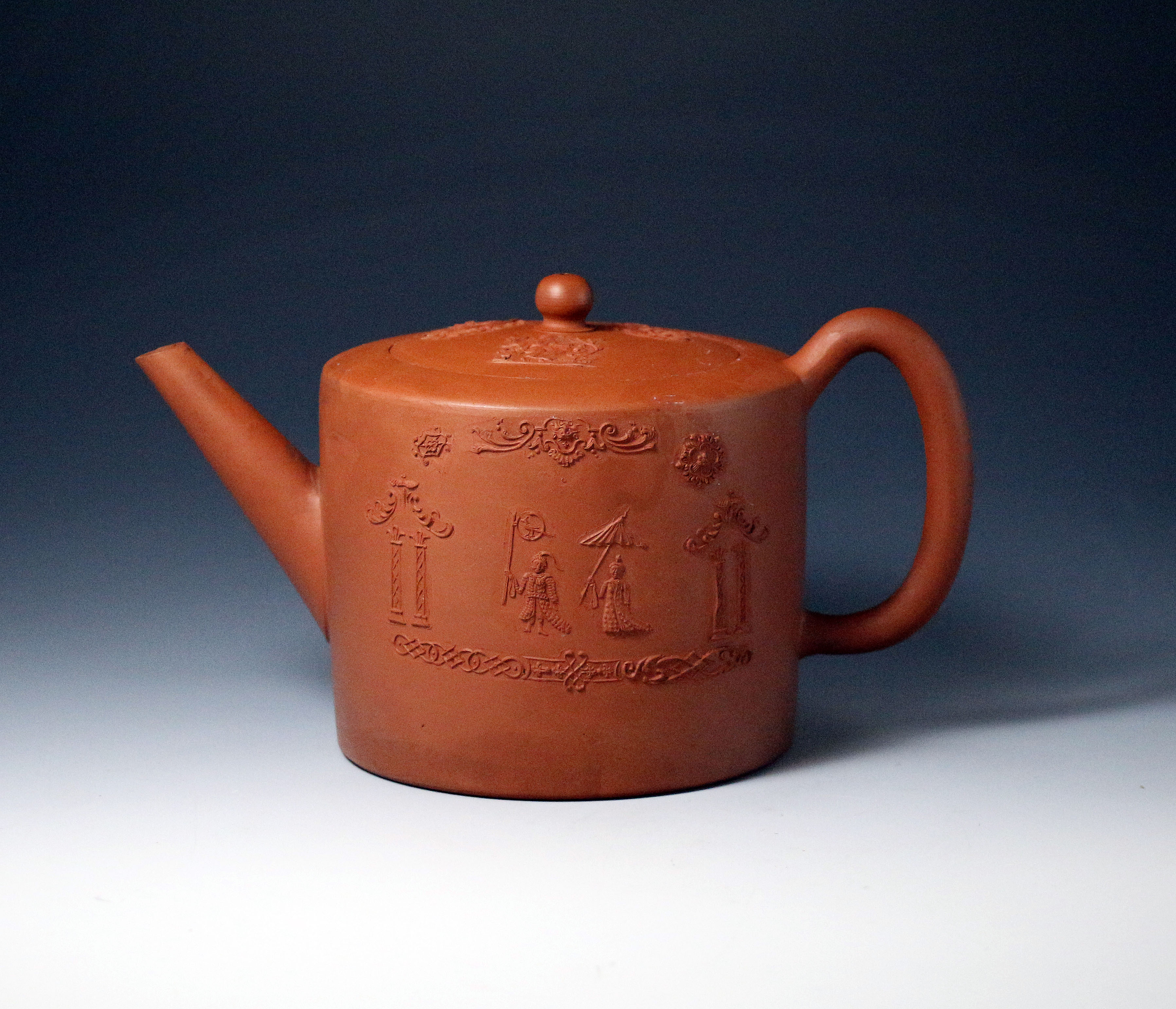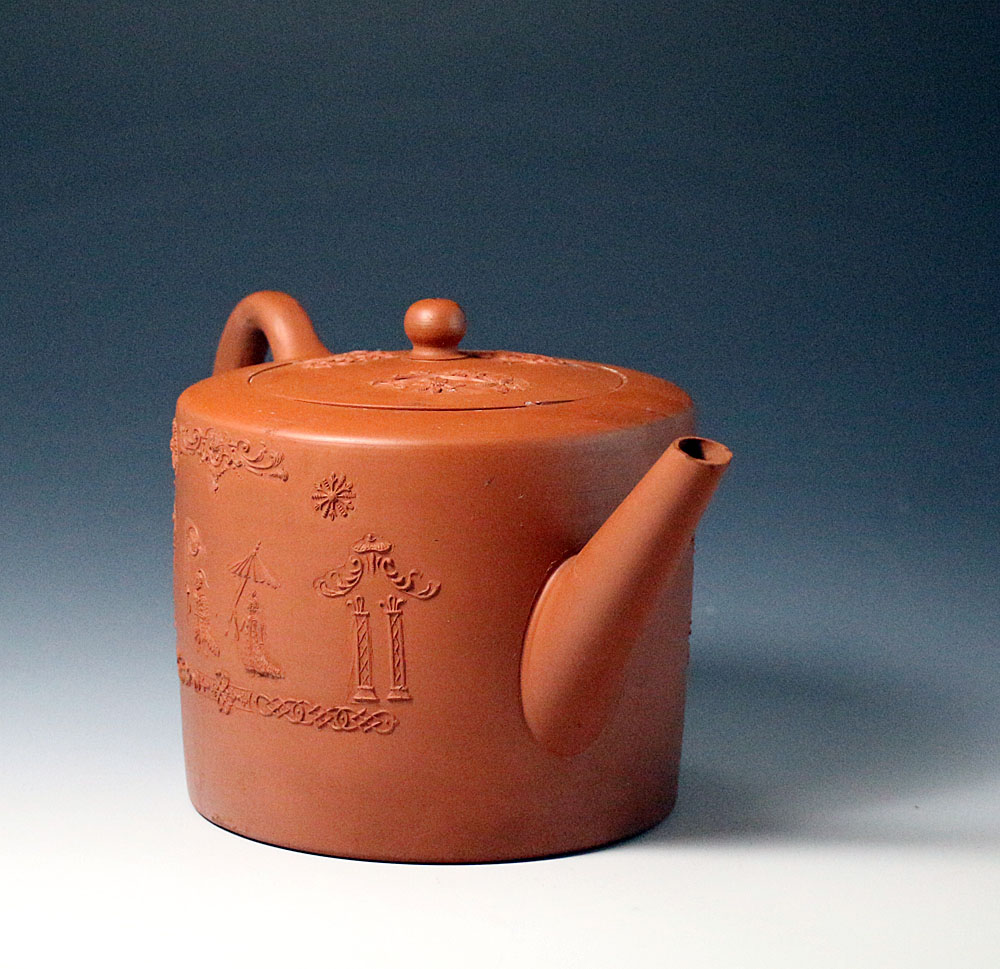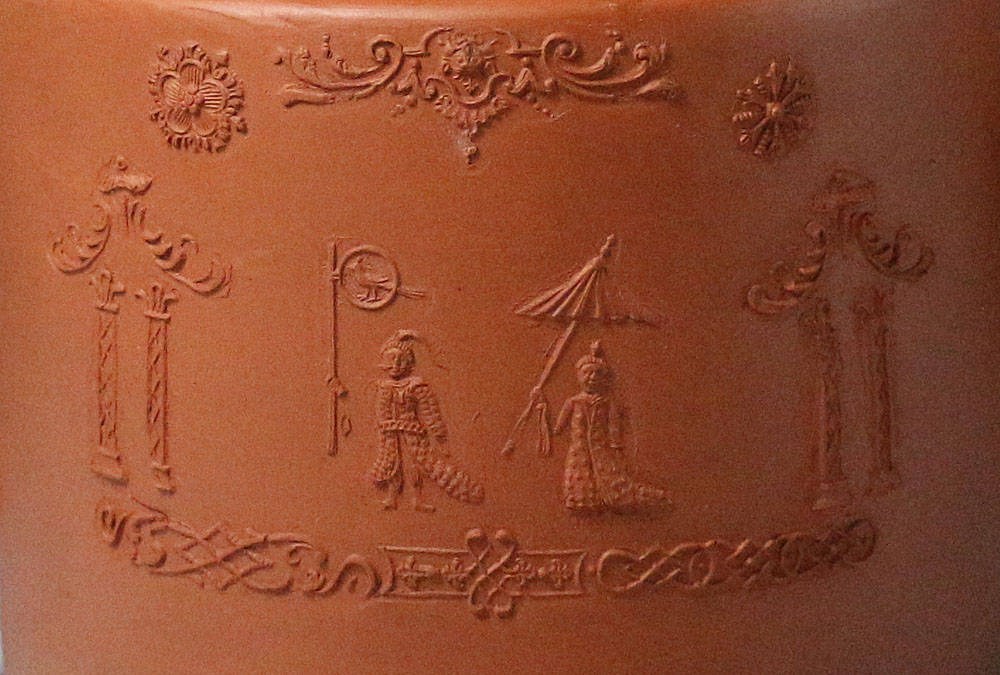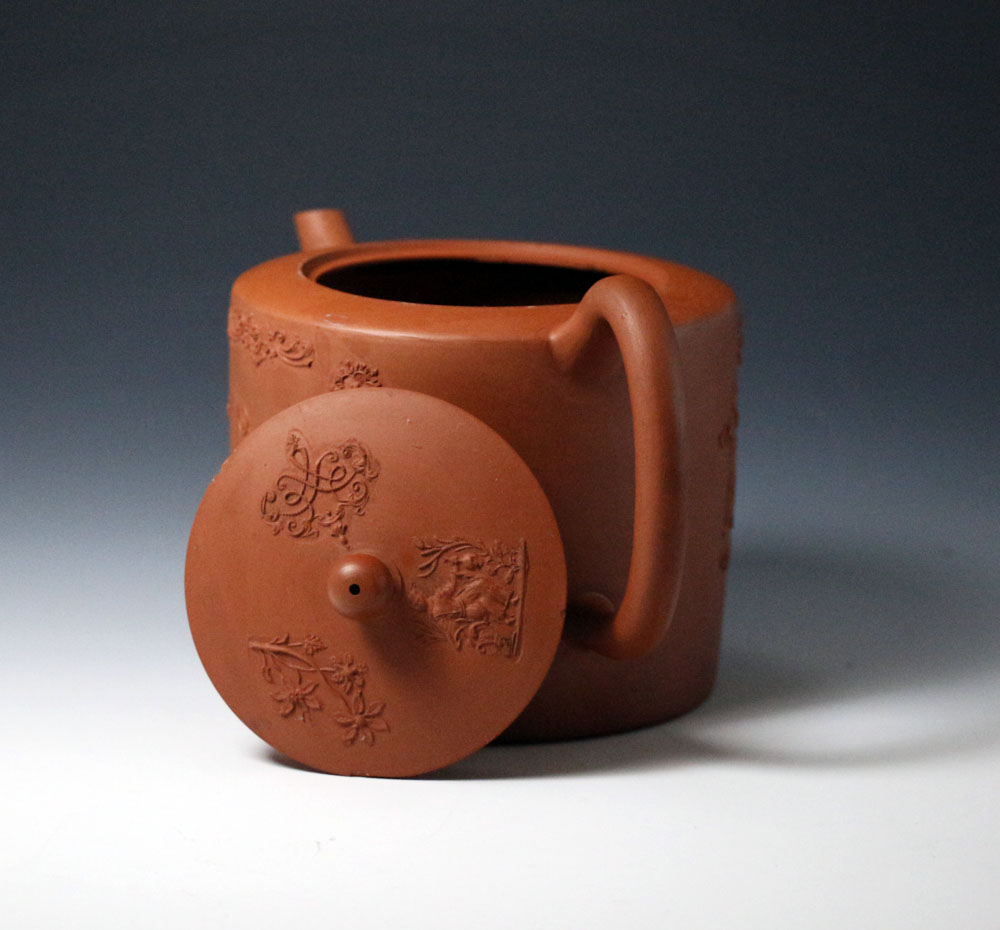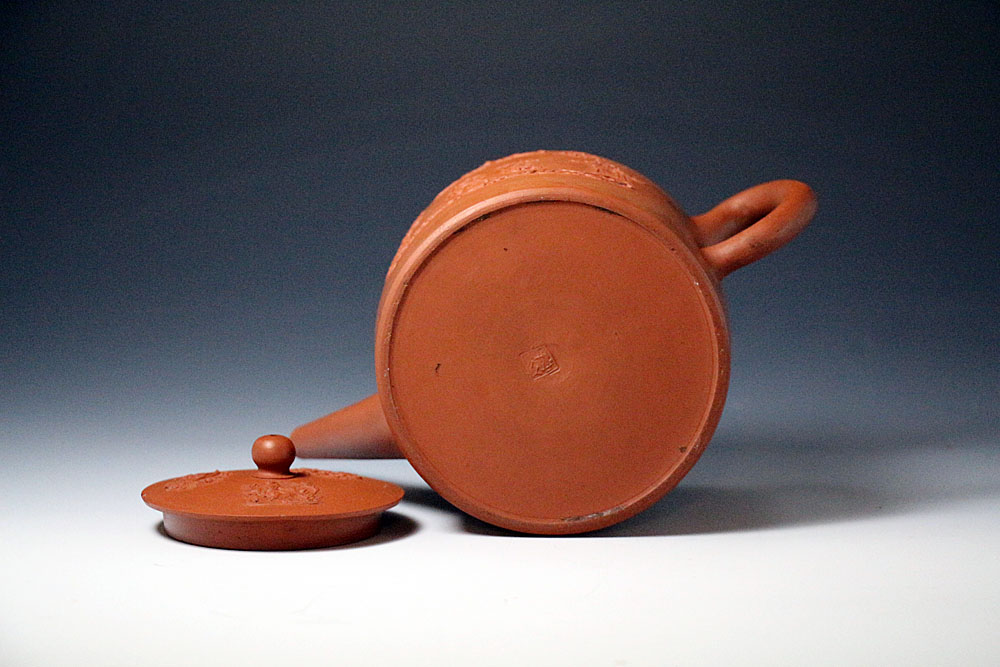Description
The redware dry bodied stoneware pottery teapot is cylindrical shaped and embellished with refined Chinese figures, flowers, and pagodas. The cover also features similar decorations. The piece was made in Staffordshire England in the mid-18th-century antique period.
The underside of the teapot is impressed with a Chinese style chop mark.
NOTES;
From the Fitzwilliam Museum Cambridge England.
Dry-bodied (unglazed) red stonewares were produced by many potters in the mid-18th century. The wares, almost always related to the drinking of tea or coffee, imitated imported Yi-Xing red stoneware from China; for example, this teapot is marked with a pseudo-Chinese seal mark and is decorated with Chinoiserie figures. Prints and illustrated books like ‘The Ladies Amusement’ helped to spread and popularise Chinoiserie imagery inspired by oriental culture.
David Barker (1991) has attributed Thomas Barker, a potter operating in the Foley area of Fenton (now part of Stoke-on-Trent) in the 1760s and 1770s. Excavations at a site of the old Barker workshop King Street in Fenton discovered a deposit of sherds dating from c.1770, which included redware.


